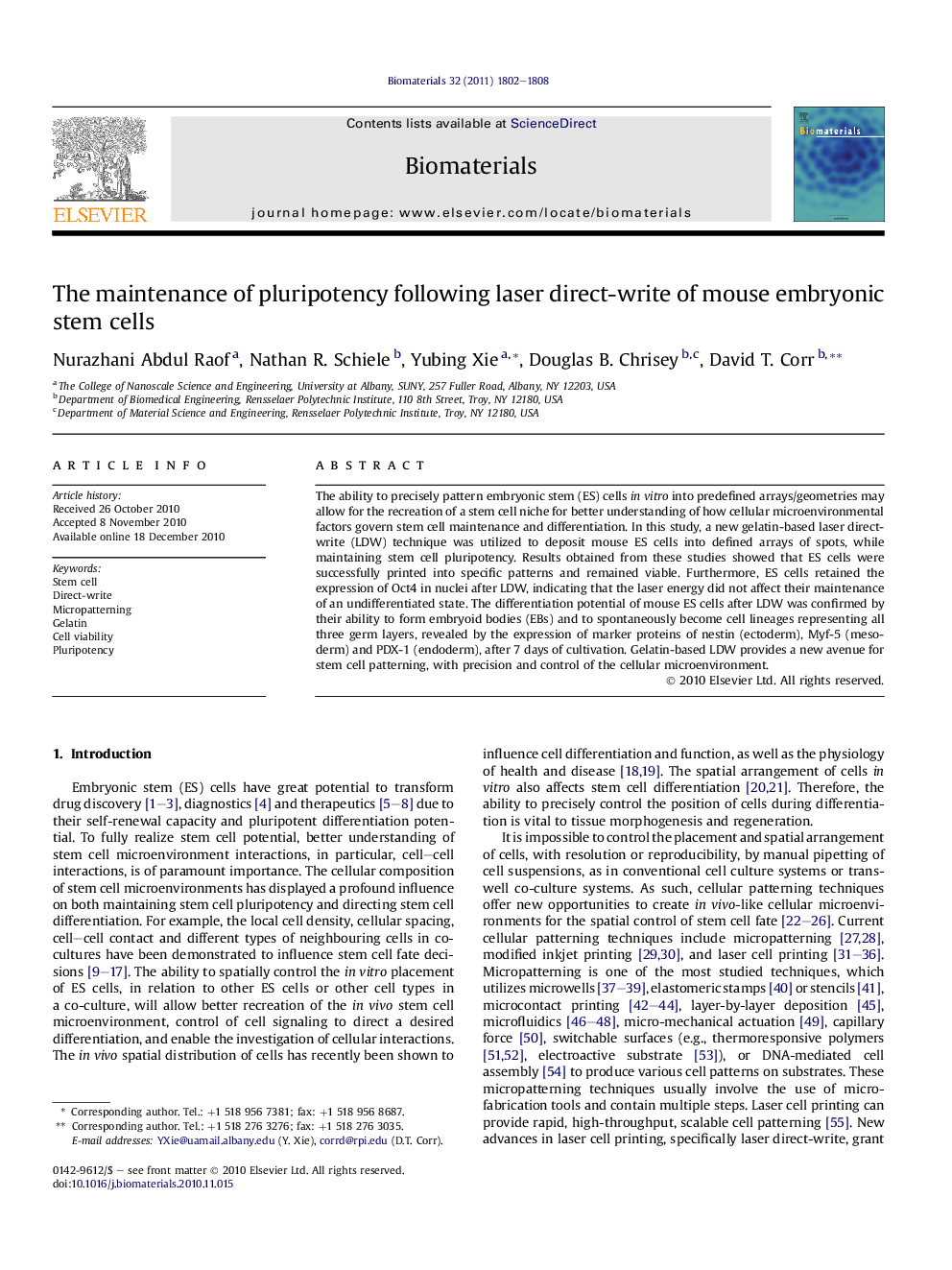| Article ID | Journal | Published Year | Pages | File Type |
|---|---|---|---|---|
| 8154 | Biomaterials | 2011 | 7 Pages |
The ability to precisely pattern embryonic stem (ES) cells in vitro into predefined arrays/geometries may allow for the recreation of a stem cell niche for better understanding of how cellular microenvironmental factors govern stem cell maintenance and differentiation. In this study, a new gelatin-based laser direct-write (LDW) technique was utilized to deposit mouse ES cells into defined arrays of spots, while maintaining stem cell pluripotency. Results obtained from these studies showed that ES cells were successfully printed into specific patterns and remained viable. Furthermore, ES cells retained the expression of Oct4 in nuclei after LDW, indicating that the laser energy did not affect their maintenance of an undifferentiated state. The differentiation potential of mouse ES cells after LDW was confirmed by their ability to form embryoid bodies (EBs) and to spontaneously become cell lineages representing all three germ layers, revealed by the expression of marker proteins of nestin (ectoderm), Myf-5 (mesoderm) and PDX-1 (endoderm), after 7 days of cultivation. Gelatin-based LDW provides a new avenue for stem cell patterning, with precision and control of the cellular microenvironment.
